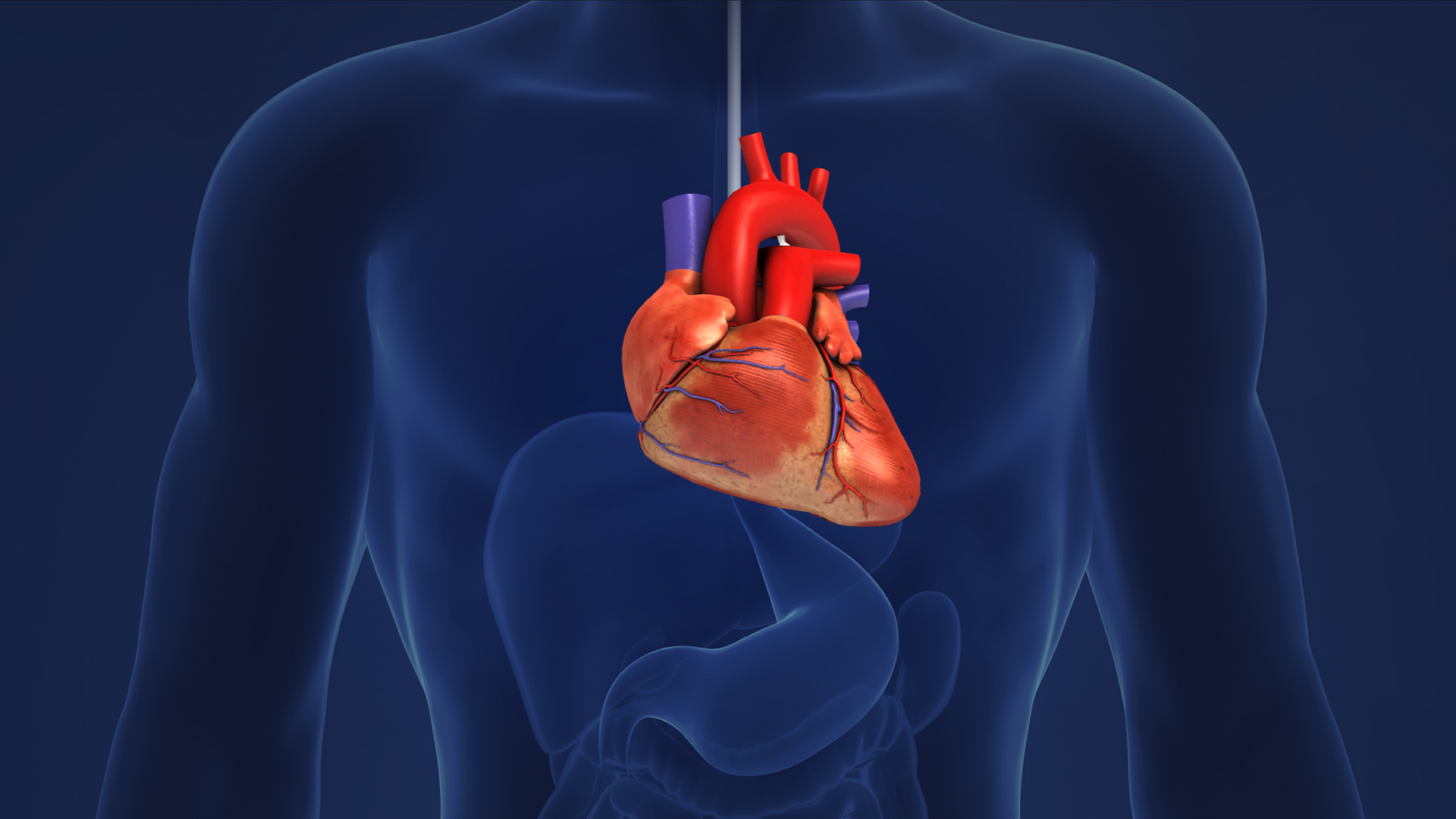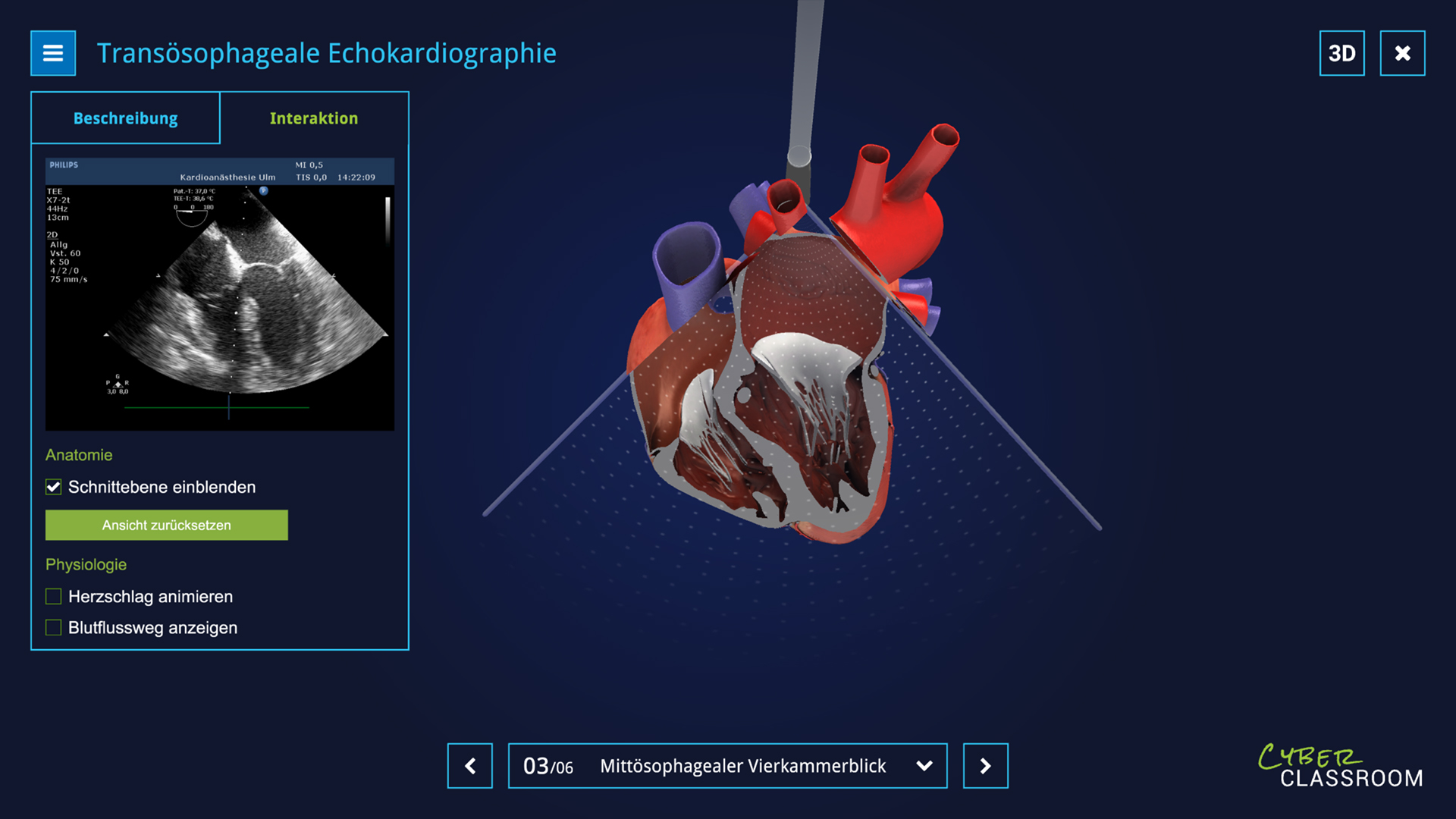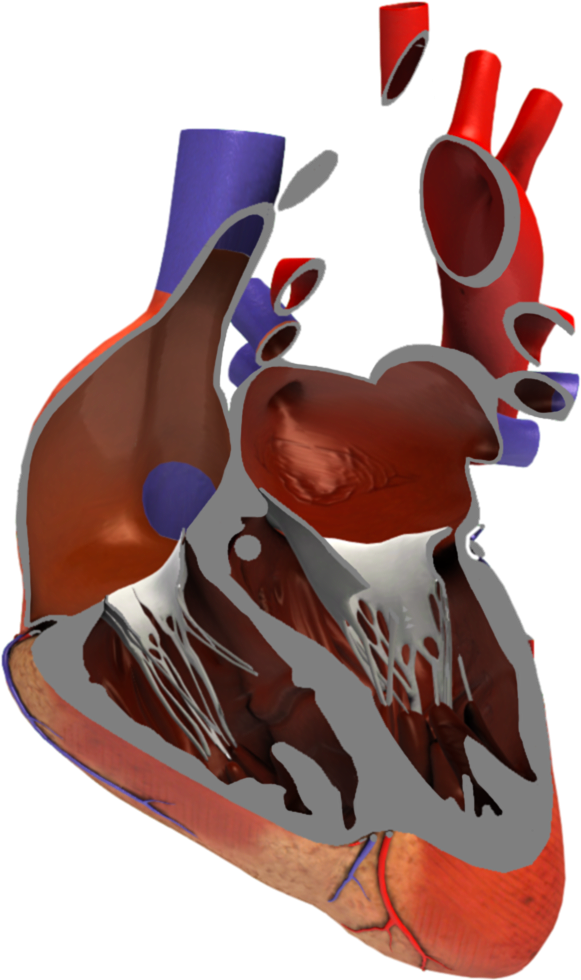
Transesophageal Echocardiaography
The cardio-anesthesiology department of Ulm University is responsible for the anesthesiological care of the clinic's heart surgery patients. In cooperation with imsimity GmbH, redPlant developed an interactive learning application for transesophageal echocardiography. The application allows physicians and students to learn various echocardiographic cuts in virtual space.

3D Heart Modell
The focus of the application is a virtual 3D model of a human heart. The user can freely interact with the virtual content by rotating and zooming. We paid attention to an anatomically correct representation of the heart.

Close Cooperation
Prerequisite for anatomical correctness was close cooperation between redPlant and the medical scientists at Ulm University. This was necessary to ensure that the application could later be properly used at the university.
Blood Flow
In addition to the animation of the heartbeat, we integrated a simulation of blood flow to give the learner a better idea of the physiology of the heart.
TEE goes VR
The next logical step for the physicians was the extension to the HTC Vive. The illustration of the heart in a virtual reality application deepens the Immersion and lets the user see directly inside.
Features
Unity
The User Interface and the interaction of the installations were implemented with [GlossarItem id="10".
Multiplatform
The Application is used on various platforms – iOS, Android, desktop, web, and VR.
Realistic Anatomy
The three-dimensional visualization of the heart was created to be anatomaically correct with the help of physicians.
Heartbeat- and Blood flow-Animation
Animations provide additional information about the physiology of the heart.